Warning: This post contains spoilers for season seven of Game of Thrones.
With an ice dragon now under his control, the Night King is more formidable than ever. But for the time being, the people of Westeros still have one major advantage over the leader of the dead: the Wall.
Although Game of Thrones hasn’t spent nearly as much time at the Wall since Jon Snow renounced his Night’s Watch vows, the magical barrier has continued to shield the Seven Kingdoms from the dangers that lie beyond. However, with the threat of the White Walkers looming large, some fans believe the Wall is slated to come crashing down in the season seven finale.
Here’s everything we know about the Wall in Game of Thrones, best known as the realm’s long-standing first line of defense.
What is the Wall in Game of Thrones?
The Game of Thrones Wall is a 700-foot tall, 300-foot thick fortification that is 300 miles and spans Westeros’ northern border — from the Bay of Seals in the east to the Gorge in the west. The ice wall was originally built to defend the realm against the White Walkers, ice creatures who were created by the Children of the Forest in an effort to defend themselves against the First Men. But many also believe the Wall is a barrier to keep the Wildlings, or anyone who chooses to live outside the Seven Kingdoms, at bay.
“The Night’s Watch has forgotten its true purpose, Tarly,” Lord Commander Jeor Mormont tells Samwell Tarly in George R.R. Martin’s A Storm of Swords. “You don’t build a wall seven hundred feet high to keep savages in skins from stealing women. The Wall was made to guard the realms of men…and not against other men, which is all the Wildlings are when you come right down to it. Too many years, Tarly, too many hundreds and thousands of years. We lost sight of the true enemy.”
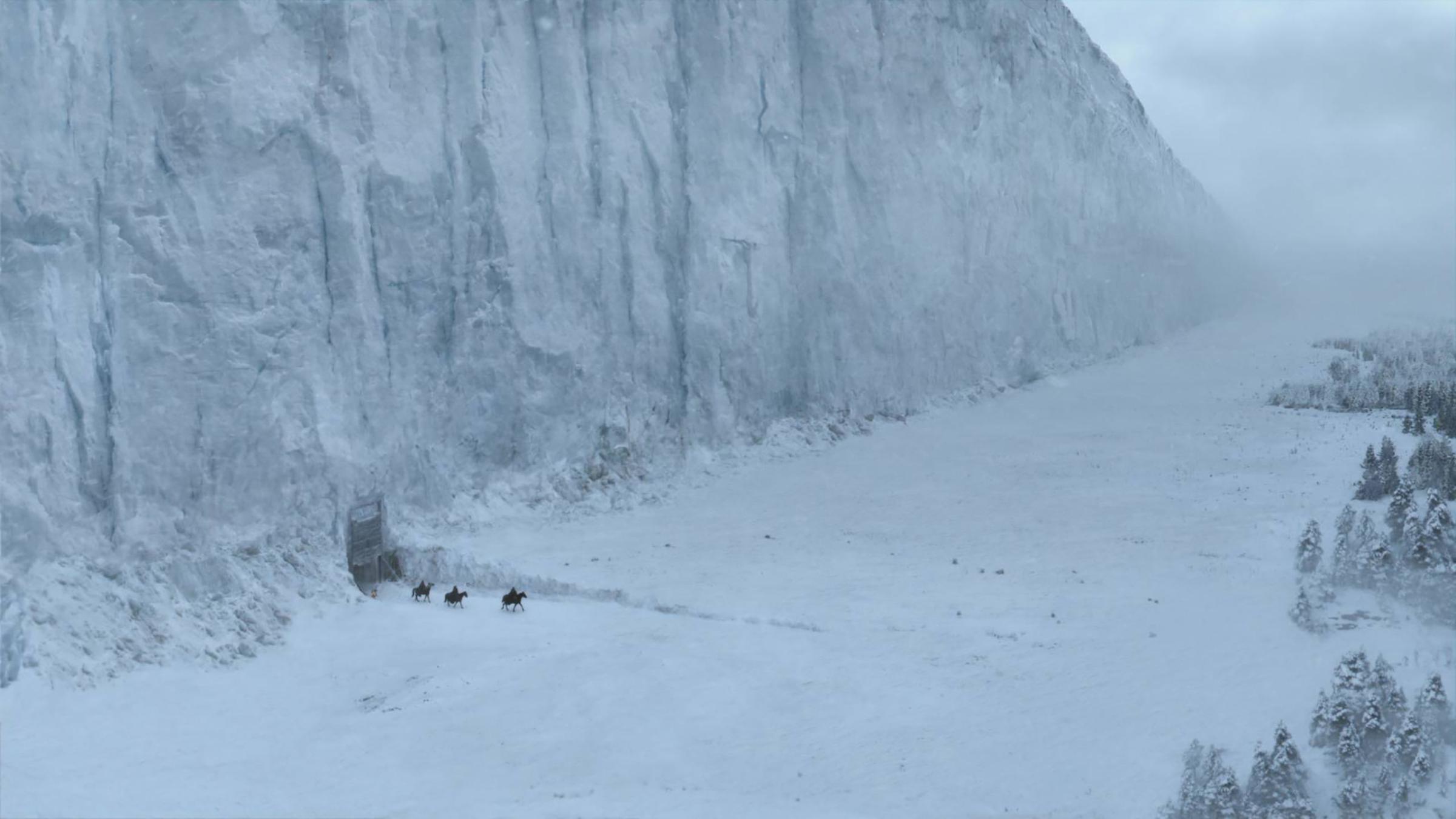
Is the Wall magic?
The Wall in Game of Thrones is said to be warded with magic to prevent the dead from crossing over. This is significant as it is presumably the only reason the Night King and his army haven’t yet attempted to cross it.
“The Wall is not just ice and stone,” Benjen Stark — the younger brother of Ned — told Bran Stark and Meera Reed in the season six finale. “Ancient spells were carved into its foundation, strong magic to protect men from what lies beyond. And while it stands, the dead cannot pass.”
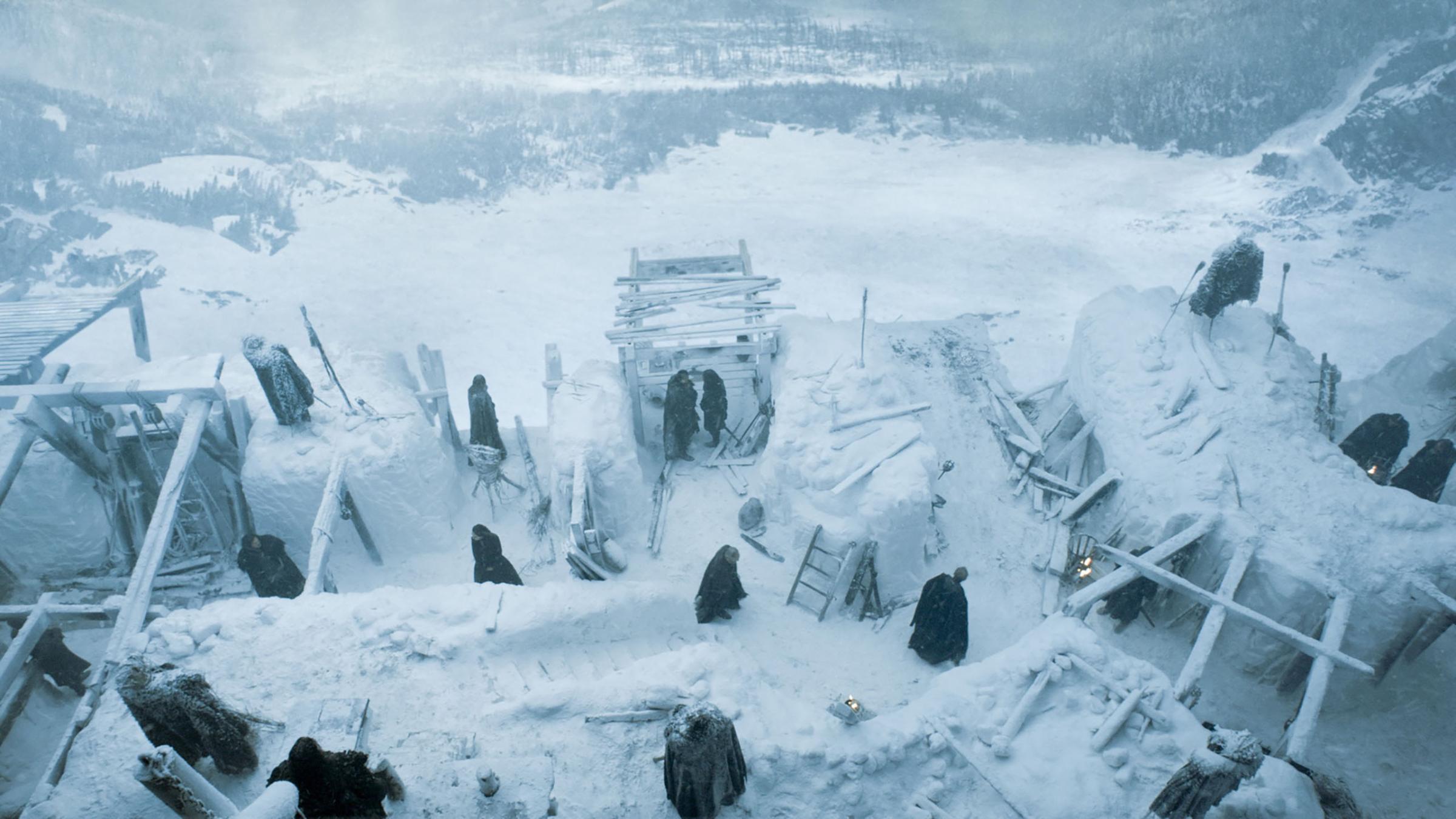
Who built the Wall?
The Wall was supposedly constructed some eight millennia ago by giants and men under the direction of King Brandon Stark — a.k.a. Bran the Builder — following the War for the Dawn.
However, some fans believe that present-day Bran Stark and Bran the Builder are actually the same person. There’s speculation that Bran will at some point travel back in time in an attempt to prevent the White Walkers from destroying Westeros only to discover that — since time in the Thrones universe operates in a closed loop — he was the one who built the Wall all along.
HBO fanned the flames of this theory when it showed Bran the Builder being carried around on a platform — indicating he may have been paralyzed just like Bran Stark — in a DVD extra about the history of Westeros on the season one box set.
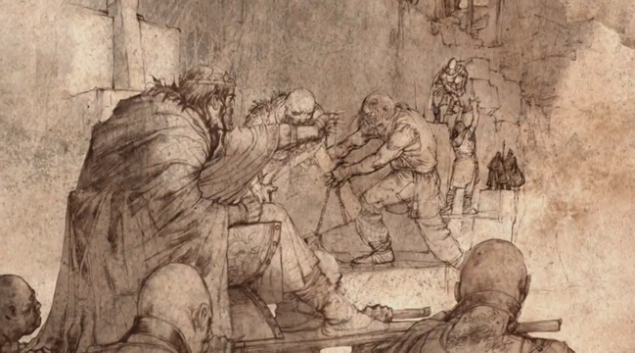
Who lives at the Wall?
The Wall is defended by the men of the Night’s Watch who live in castles positioned at strategic locations along its 300-mile length. However, while the Watch once drew enough recruits to man up to 17 of its 19 castles at one time, there are now only three still guarded by sworn brothers — Castle Black, Eastwatch-by-the-Sea and the Shadow Tower. When recruits are accepted into the Watch, they “take the black” by reciting the following vows:
Night gathers, and now my watch begins. It shall not end until my death. I shall take no wife, hold no lands, father no children. I shall wear no crowns and win no glory. I shall live and die at my post. I am the sword in the darkness. I am the watcher on the walls. I am the fire that burns against the cold, the light that brings the dawn, the horn that wakes the sleepers, the shield that guards the realms of men. I pledge my life and honor to the Night’s Watch, for this night and all the nights to come.
After joining the Night’s Watch in season one, Jon Snow — along with his fellow brother Sam Tarly — spent much of his time either stationed at Castle Black or ranging beyond the Wall with Lord Commander Jeor Mormont. Jon’s years with the Watch also included an undercover stint with the Widlings beyond the Wall during which he was introduced to Ygritte, Tormund and Free Folk leader Mance Rayder.
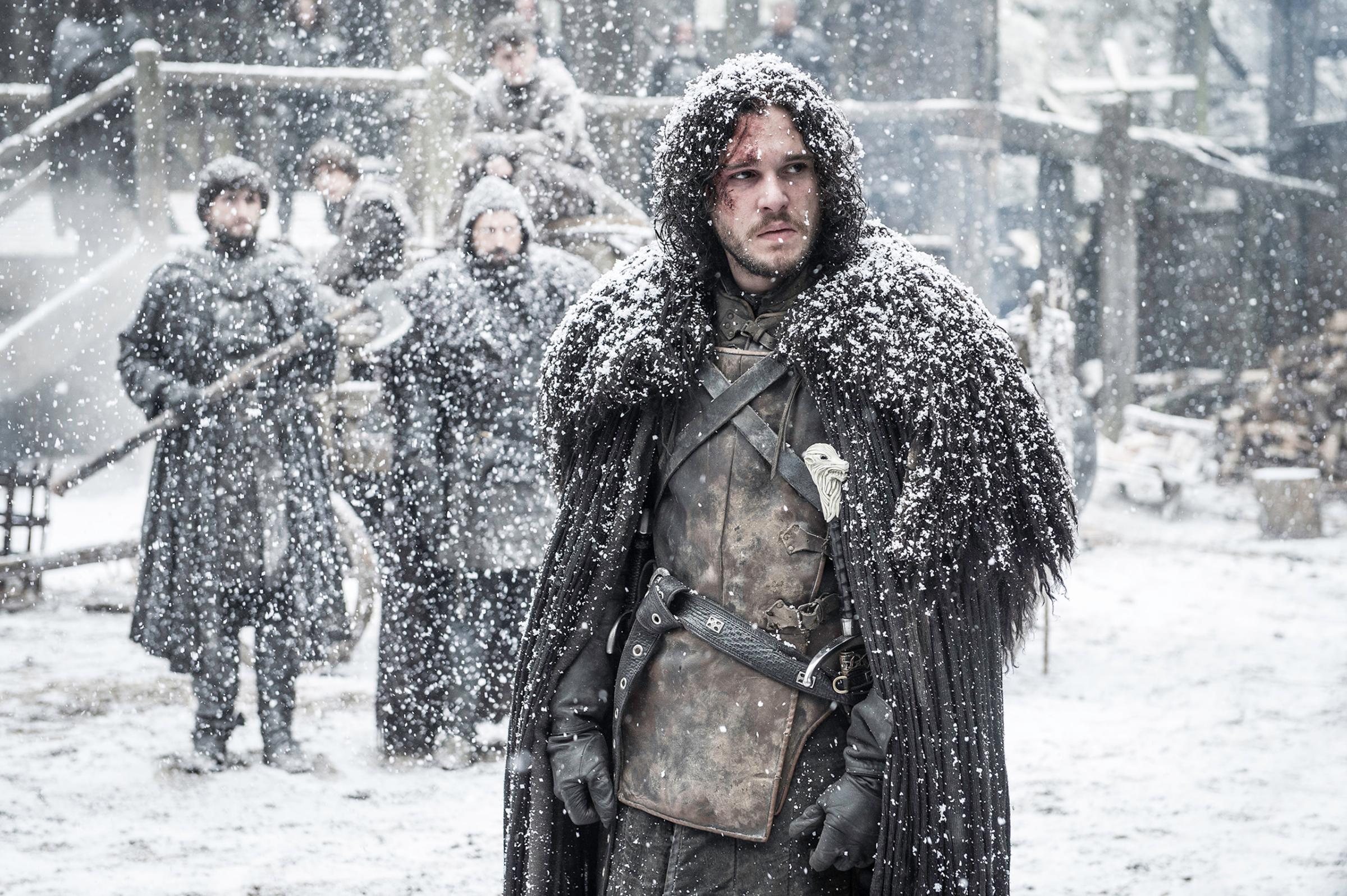
MORE: To stay up to date on everything Game of Thrones, follow our all-encompassing Facebook page and sign up for our exclusive newsletter.
Where is the Wall in real life?
During a 2014 interview with Rolling Stone, George R.R. Martin revealed that he came up with the concept of the Wall while visiting Hadrian’s Wall in England.
I can trace back the inspiration for that to 1981. I was in England visiting a friend, and as we approached the border of England and Scotland, we stopped to see Hadrian’s Wall. I stood up there and I tried to imagine what it was like to be a Roman legionary, standing on this wall, looking at these distant hills. It was a very profound feeling. For the Romans at that time, this was the end of civilization; it was the end of the world. We know that there were Scots beyond the hills, but they didn’t know that. It could have been any kind of monster. It was the sense of this barrier against dark forces – it planted something in me.
However, the Wall in the show is created pretty much entirely through CGI.
Will the Wall fall?
There are a number of fan theories regarding the destruction of the Wall. Here are a few of the most popular.
The Night King’s Mark
After being physically touched by the Night King during a vision in the fifth episode of season six, Bran was told by the former Three-Eyed Raven that he was no longer safe in the cave under the giant weirwood tree. The Night King and his White Walker lieutenants were then able to gain entrance to the cave, proving that he had nullified its magic by marking Bran. If the same principle holds true for the spells of the Wall, Bran may have already undone its magic when he crossed back to the southern side.
Viserion the Ice Dragon
The final moments of the sixth episode of season seven saw the army of the dead drag Viserion’s body out from the depths of the frozen lake beyond the Wall. The Night King then laid his hand on the dragon’s snout, reanimating him. Considering the birth of Daenerys’ dragons was the event that reawoke magic in the world of Thrones following a long period of dormancy, it stands to reason that an undead dragon may be a powerful enough being to overcome the Wall’s wards — and maybe even bring the entire thing crashing down.
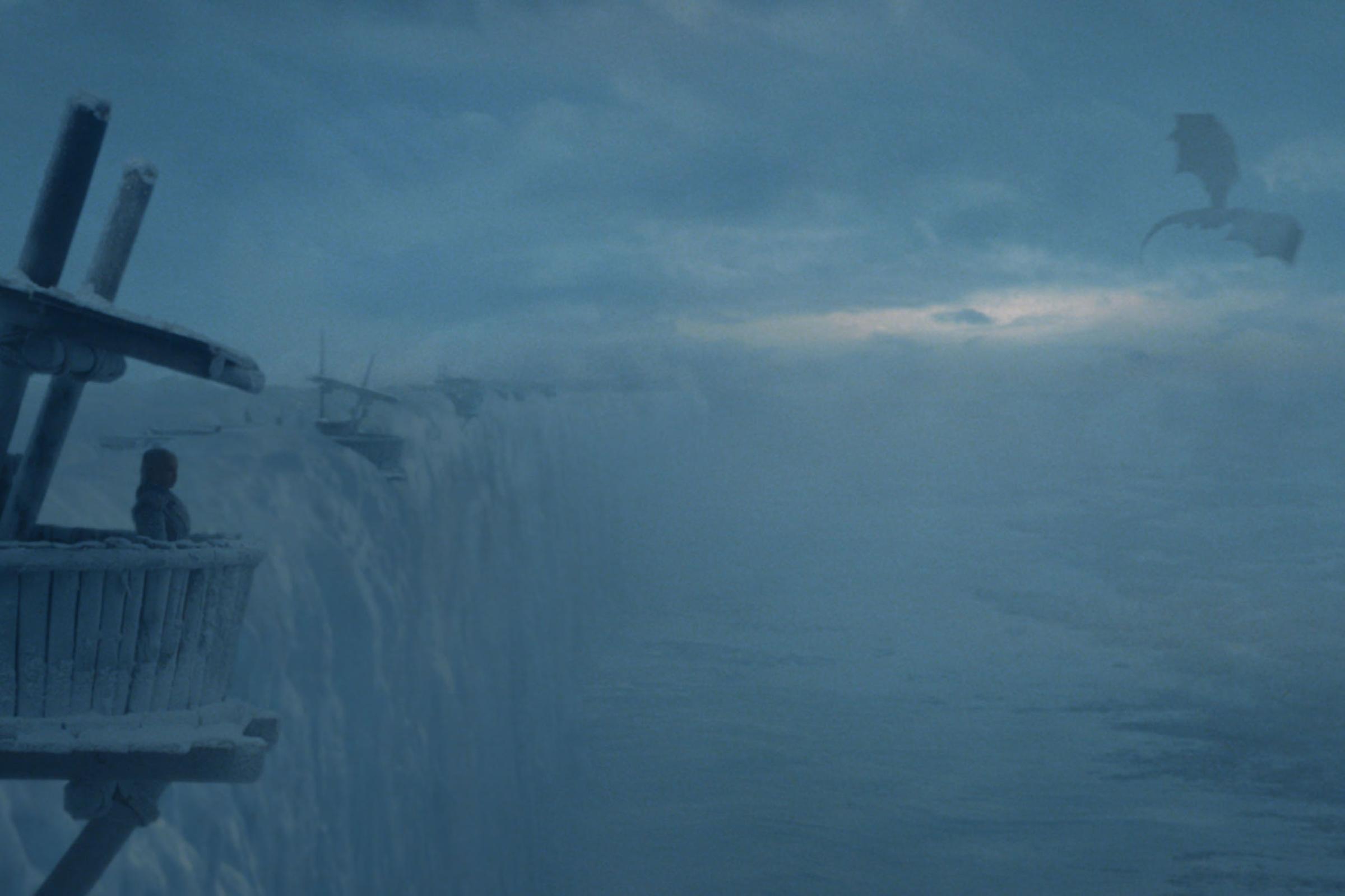
The Horn of Winter
Since the Horn of Winter — also known as the Horn of Joramun — has never even been mentioned on the show, it’s unlikely that it will come into play this late in the game. However, in George R.R. Martin’s A Song of Ice and Fire book series, the Horn is a legendary artifact said to posses the power to bring down the Wall when blown. Ygritte tells Jon that the Wildlings searched far and wide for the Horn under the direction of Mance Rayder, but it was supposedly never found.
However, in A Dance With Dragons, Melisandre gives an ominous warning to the Free Folk concerning the Horn. “The Horn of Joramun? No. Call it the Horn of Darkness,” she says. If the Wall falls, night falls as well, the long night that never ends. It must not happen, will not happen!”
The Night King seems to have tools at the ready for every obstacle he encounters — like ice spears and giant chains. So, although unlikely, it’s possible he could be waiting for the right moment to reveal he’s in possession of the Horn as well.
“The Dragon and the Wolf,” the finale of Game of Thrones‘ seventh season, airs Aug. 27 at 9 p.m. on HBO.
More Must-Reads from TIME
- L.A. Fires Show Reality of 1.5°C of Warming
- How Canada Fell Out of Love With Trudeau
- Trump Is Treating the Globe Like a Monopoly Board
- Bad Bunny On Heartbreak and New Album
- 10 Boundaries Therapists Want You to Set in the New Year
- The Motivational Trick That Makes You Exercise Harder
- Nicole Kidman Is a Pure Pleasure to Watch in Babygirl
- Column: Jimmy Carter’s Global Legacy Was Moral Clarity
Write to Megan McCluskey at megan.mccluskey@time.com



